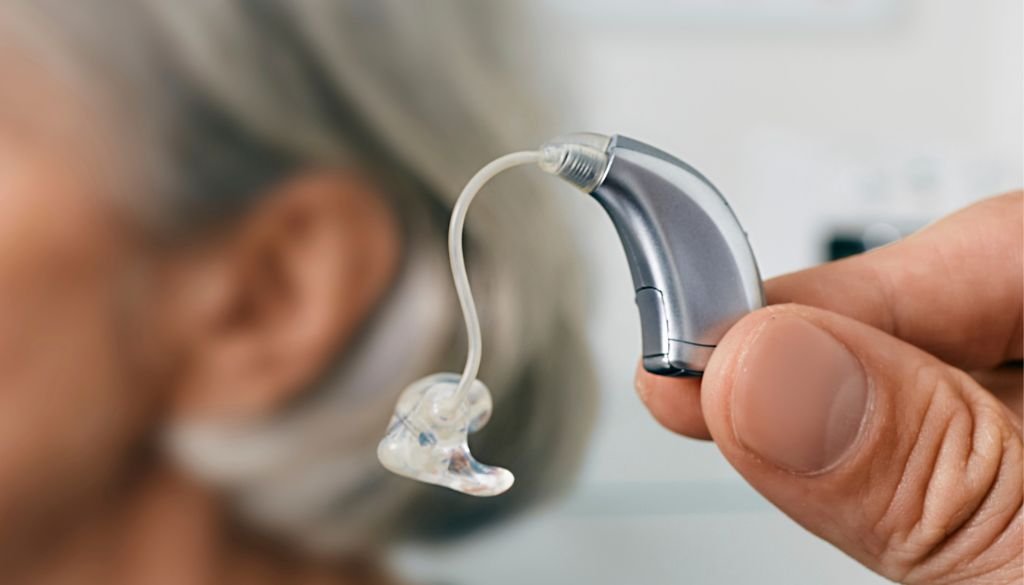Grasping How to Measure Hearing Aid Domes is fundamental for those using receiver-in-ear (RIC) hearing aids, as it directly impacts comfort and auditory performance. These domes, varying in shape and size, are vital components in effectively transmitting sound into the ear canal. Accurate measurement of hearing aid domes is essential to ensure they fit snugly and provide the best possible sound quality. This guide will take you through the meticulous process of measuring hearing aid domes, utilizing specific tools and techniques to ascertain the perfect size for your ear canal. Understanding this process is critical to achieving a comfortable fit and maximizing the efficiency of your hearing aid, thereby enhancing your overall auditory experience.

Key Takeaways:
- Accurate measurement of hearing aid domes is vital for comfort and performance.
- Use a measuring tool to determine the correct size based on the center of the ear canal.
- The size of the dome affects the fit and sound quality of the hearing aids.
- Measuring accurately ensures a secure, appropriate, and optimal performance.
- Consult with an audiologist for professional guidance on measuring hearing aid domes.
Different Types of Hearing Aid Domes and Their Benefits
There are three types of hearing aid domes: open, closed, and power. Each class has unique benefits and considerations depending on your needs and preferences.
Open Domes
Open domes are designed for individuals prioritize maximum comfort and natural sound quality. These domes allow natural sound to enter the ear canal, resulting in a more relaxed and less occluded feeling. Open domes are an excellent choice for those who don’t experience significant low-frequency hearing loss. However, it’s important to note that open domes may require more power due to sound leakage, which can reduce battery life.
Closed Domes
Closed domes might be your ideal option if you’re looking for better amplification of low-frequency sounds. Also known as vented or tulip domes, closed domes provide a more sealed fit and can enhance the perception of lower-frequency tones. However, closed domes may reduce the sharpness of higher frequencies. Therefore, if you have specific listening needs in higher frequency ranges, it’s worth discussing this with your audiologist to determine the most suitable dome type.
Power Domes
Power domes are specifically designed for individuals with severe hearing loss. These domes provide maximum amplification with minimal sound leakage. Power domes can deliver the extra power needed to ensure optimal sound quality if you require high amplification levels. However, power domes may slightly reduce comfort due to their size and the increased occlusion they create.
When selecting the correct type of hearing aid dome for you, you must consult your audiologist. They will consider your degree of hearing loss, lifestyle, and listening preferences to help you make an informed decision. By choosing the most appropriate dome type, you can enhance your hearing aid experience and enjoy the sounds that matter most to you.
Selecting the Right Size of Hearing Aid Domes
Choosing the right size of hearing aid domes is crucial for a comfortable fit and sound quality. The size of the crown will directly impact how secure the hearing aid sits in your ear and how well it delivers sound into the ear canal. Working closely with an audiologist is essential in determining the correct size of hearing aid domes for your needs.
During the fitting process, the audiologist will measure the size of your ear canal to select the appropriate dome size. The dome should be slightly larger than the ear canal to form a secure seal without exerting excessive pressure. Domes that are too small may not secure the hearing aid properly, leading to discomfort and potential sound leakage. On the other hand, crowns that are too large can cause soreness or swelling, making them uncomfortable to wear.
In addition to the physical measurements, it’s essential to consider the specific needs of your hearing loss. Different sizes and styles of hearing aid domes may be recommended based on the level of hearing loss and individual preferences. Discussing your requirements with an audiologist ensures that the selected dome size provides a comfortable fit and optimal sound quality for your unique situation.
Read Also: can you regain hearing loss after a stroke
Cleaning and Replacement of Hearing Aid Domes
Hearing aid domes are prone to accumulating earwax and debris over time, affecting their performance and posing hygiene concerns. Regular maintenance is crucial to ensure optimal functionality and prolong the lifespan of your hearing aid. Follow these simple steps to clean and replace your hearing aid domes:
Cleaning Domes
To clean the domes, you will need a soft, damp cloth or a specialized cleaning tool designed for hearing aids. Gently wipe the crowns to remove any visible earwax or debris. Avoid using sharp objects as they can scratch or damage the heights, and refrain from using water or soap to prevent moisture damage. Cleaning the peaks should be part of your daily routine to maintain optimal sound quality and prevent blockages.
Replacing Domes
Over time, hearing aid domes may lose shape, become discolored, or show wear and tear. Replacing the crowns every 2-6 months is generally recommended, although the frequency may vary depending on individual usage and maintenance habits. Regular check-ups with an audiologist can help determine when replacement is necessary. When replacing the domes, select the appropriate size and style that fits your ear canal and hearing aids. Properly fitting crowns are essential for a comfortable and secure fit.
Professional Assistance
If you need help cleaning or replacing your hearing aid domes, it is best to consult a professional audiologist. They can guide the proper maintenance techniques and recommend suitable products for cleaning and replacement. Regular visits to your audiologist will ensure that your hearing aids are in good condition and functioning optimally.
How to fail a hearing test for tinnitus. Our article provides critical insights into the nature of hearing tests in relation to tinnitus and what you can expect during the evaluation.
Regularly cleaning and replacing your hearing aid domes are essential for optimal performance and hygiene. By following these simple steps and seeking professional advice, you can enjoy clear and comfortable hearing for years.
Conclusion
Hearing aid domes are crucial components that significantly impact the performance and comfort of your hearing aids. Choosing the right type and size of the dome is essential for achieving optimal sound quality and comfort. Regular cleaning and replacement of the domes ensure continued optimal performance and hygiene.
When purchasing replacement domes, relying on a reliable source is essential. Flex Audiology, a trusted provider, offers various sizes and styles to ensure a perfect fit for your hearing aids and ear shape. You can enjoy the sounds that matter most to you by properly maintaining and replacing your hearing aid domes.
Remember, for optimal performance and a perfect fit, choose Flex Audiology as your reliable source for hearing aid domes. Trust in their expertise and quality products to ensure you continue to experience the best possible hearing experience.
Frequently Asked Questions
How do I measure hearing aid domes?
To measure hearing aid domes accurately, use a measuring tool and determine the correct size based on the center of the ear canal.
What are the different types of hearing aid domes?
The three main types of hearing aid domes are open, closed, and power domes.
What are the benefits of open domes?
Open domes provide maximum comfort and allow natural sound to enter the ear canal. However, they may require more power due to sound leakage.
What are the benefits of closed domes?
Closed domes offer better amplification of lower-frequency sounds but may reduce sharpness in higher frequencies.
What are the benefits of power domes?
Power domes are suitable for severe hearing loss and provide maximum amplification with minimal sound leakage.
How do I select the right size of hearing aid domes?
The audiologist fitting your hearing aids will typically select the appropriate size dome based on your ear canal size.
What should I consider when selecting the size of hearing aid domes?
The hearing aid dome should be slightly larger than the ear canal to form a secure seal without exerting excessive pressure.
What happens if the hearing aid dome is too small?
Too small domes are ineffective and do not secure the hearing aid properly.
What happens if the hearing aid dome is too large?
Domes that are too large can be uncomfortable and cause soreness or swelling.
How often should I clean and replace hearing aid domes?
Cleaning the domes should be part of your daily routine; replacement is recommended every 2-6 months. However, this can vary depending on usage and maintenance habits.
Where can I find reliable replacements for hearing aid domes?
Flex Audiology offers various sizes and styles to ensure a perfect fit for your hearing aids and ear shape.



